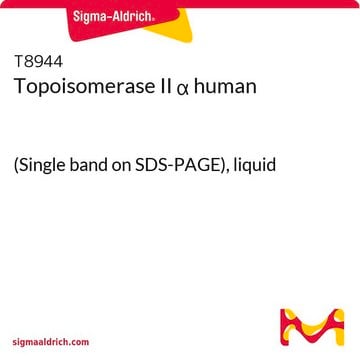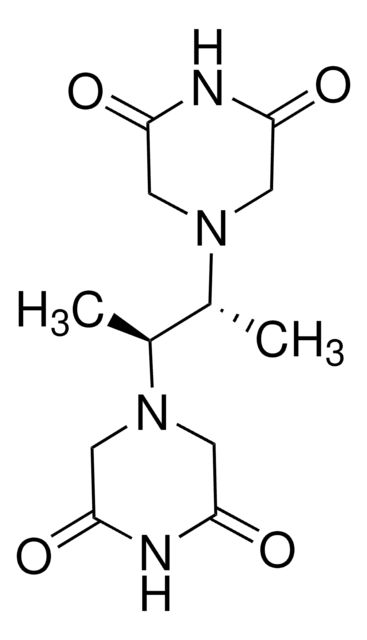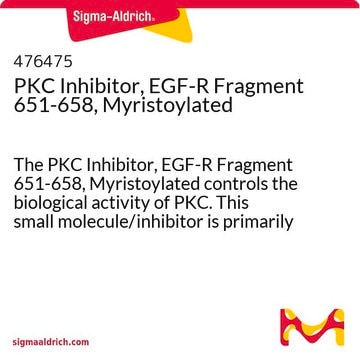614853
Topoisomerase II Inhibitor, BNS-22
The Topoisomerase II Inhibitor, BNS-22 controls the biological activity of Topoisomerase. This small molecule/inhibitor is primarily used for Cell Structure applications.
Synonym(s):
Topoisomerase II Inhibitor, BNS-22, BNS-22
Sign Into View Organizational & Contract Pricing
All Photos(2)
About This Item
Empirical Formula (Hill Notation):
C24H25NO5
Molecular Weight:
407.46
MDL number:
UNSPSC Code:
12352200
NACRES:
NA.54
Recommended Products
Quality Level
Assay
≥99% (HPLC)
form
solid
manufacturer/tradename
Calbiochem®
storage condition
OK to freeze
protect from light
color
white
solubility
DMSO: 25 mg/mL, clear, colorless
shipped in
ambient
storage temp.
2-8°C
General description
A potent, 2H-chromen-2-one small molecule inhibitor that is selective for TOP2 (IC50 = 2.8 µM and 0.42 µM for TOP2α and TOP2β, respectively). Unlike TOP2 poisons such as etoposide, it does not lead to DNA damage associated with DNA Double-Strand Breaks, as evidenced by the lack of γ-H2AX accumulation but instead inhibits kinetoplast DNA decatenation in vitro. This compound affects cell cycle at the M phase and disturbs mitotic spindle formation in HeLa cells at 3-10 µM. It also exhibits significant anti-proliferative activities against several human cancer cell lines.
Packaging
Packaged under inert gas
Warning
Toxicity: Standard Handling (A)
Reconstitution
Following reconstitution, aliquot and freeze (-20°C). Stock solutions are stable for up to 3 months at -20°C.
Other Notes
Kawatani, M., et al. 2011. Chem Biol.18, 743.
Legal Information
CALBIOCHEM is a registered trademark of Merck KGaA, Darmstadt, Germany
Storage Class Code
11 - Combustible Solids
WGK
WGK 3
Flash Point(F)
Not applicable
Flash Point(C)
Not applicable
Certificates of Analysis (COA)
Search for Certificates of Analysis (COA) by entering the products Lot/Batch Number. Lot and Batch Numbers can be found on a product’s label following the words ‘Lot’ or ‘Batch’.
Already Own This Product?
Find documentation for the products that you have recently purchased in the Document Library.
Arun Pal et al.
Life science alliance, 4(4) (2021-02-24)
Intronic hexanucleotide repeat expansions (HREs) in C9ORF72 are the most frequent genetic cause of amyotrophic lateral sclerosis, a devastating, incurable motoneuron (MN) disease. The mechanism by which HREs trigger pathogenesis remains elusive. The discovery of repeat-associated non-ATG (RAN) translation of
Our team of scientists has experience in all areas of research including Life Science, Material Science, Chemical Synthesis, Chromatography, Analytical and many others.
Contact Technical Service








